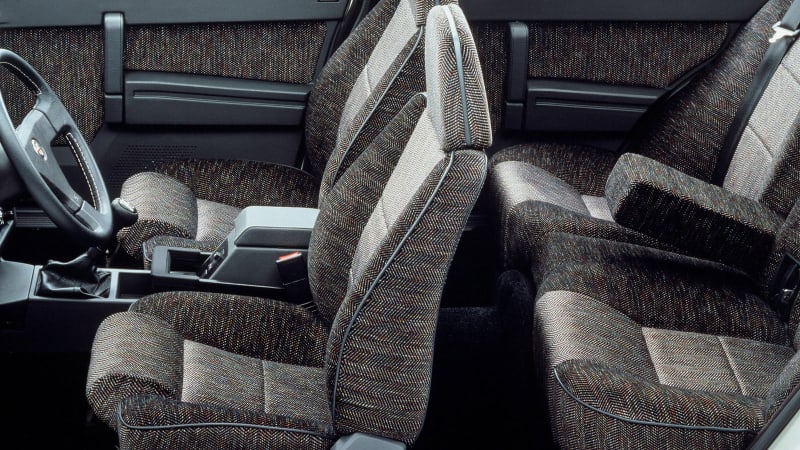Future Classic: Alfa Romeo Milano

While the glory that was Alfa Romeo may be in the past on this side of the Atlantic, there still remains evidence of Italianate greatness on used car lots and in new car showrooms: stunning sports cars of graceful lines (if unreliable electronics), colorful sport utility vehicles of modest power and functionality, and a smattering of older sedans — or, “family saloons” — that, in 2023, might be called classic.
Take, for example, the Alfa Milano.
Why is the Alfa Romeo Milano a future classic?
Launched on May 17, 1985, the car was born as the Alfa 75 in Italy, named to celebrate the 75th anniversary of the company’s founding in Milan. Unlike many Alfas of jaw-dropping beauty, the angular, pseudo-boxy Milano wedge, as it was called in America, was primarily about the engine.
Sold between June 1986 and August 1989, the Milano was initially offered in three trim levels: Silver, Gold, and Platinum. Each level was equipped with more and more goodies, with the Platinum stocked with leather, a sunroof, ABS brakes, and a limited-slip differential. All of these models had a 2.5-liter, SOHC version of the Busso V6, producing 154 horsepower. It was nicknamed after its creator, Giuseppe Busso.
It’s worth noting that smaller engines were offered in Europe, and during the car’s lifecycle there, they were replaced by a novel “Twin Spark” four-cylinder unit, which featured two spark plugs per cylinder, allowing for more efficiency and power.
Initially, Milano was designed to compete with a new-ish class of European sports sedans like the Mercedes-Benz 190 and the BMW 3 Series. Under the Milano’s skin was a modest rear-wheel-drive chassis with bits borrowed from Alfa’s motorsports heritage: torsion bars and shock absorbers up front and a De Dion tube with shocks and coil springs in the rear (the De Dion “Dead Axle” setup was chosen as it reduced the unsprung weight in comparison to a live rear axle).
In its day, the Milano was boarderline-quirky in an Italian way, battling an often deserved reputation for questionable reliability but undeniably handsome (in rosso Alfa, of course) and a joy to drive on challenging roads with its gutsy six and rear-wheel-drive platform.
What is the best example of the Alfa Romeo Milano?
Late in its lifecycle, in 1987, emerged the “ultimate” 75/Milano, the Verde.
Identified by a green cloverleaf badge (Quadrifoglio in Italian), the Milano Verde churned out 183 horses through a five-speed manual gearbox, a limited-slip differential, and a larger front anti-roll bar. Just 900 or so Milano Verdes were produced, many tricked out with fender flares, orange gauges, and a full Recaro interior. The model’s production for the U.S. market ended in 1989, with the all-new, front-wheel-drive 164 sedan arriving for the 1991 model year.

For collectors, the lower-spec Silver and Gold trim cars are the most prevalent, with Platinum cars being more difficult to find. Verdes, with their 3.0-liter engines and other factory upgrades, are the most valuable and desirable since less than 1,000 were built. Don’t be surprised to encounter listings that boast about “repaired” electrical issues.
A recent survey of Milanos at auction at Bring a Trailer showed a robust listing of 33 cars, with the most desirable in the range of $10,000 to $20,000. A 1987 Gold model recently took in $8,200 in California, driven by a 2.5-liter V6 and five-speed manual. A 1988 Verde edition with a replaced engine and Bilstein dampers — but with 168,000 miles — priced out at $8,700.
Are there any good alternatives to the Alfa Romeo Milano?
Mentioned above, the Mercedes-Benz 190E was a premier contender in this market. Thanks to the 2.6-liter inline-six engine, it could generate 158 horsepower.
Another classic would be Saab 900 Turbo, built with bulletproof Swedish quality and a novel — for its time — turbocharger. Also consider this other Swedish entry, the Volvo 740. It features the Getrag five-speed manual transmission and the 2.3-liter engine.
Related video:



